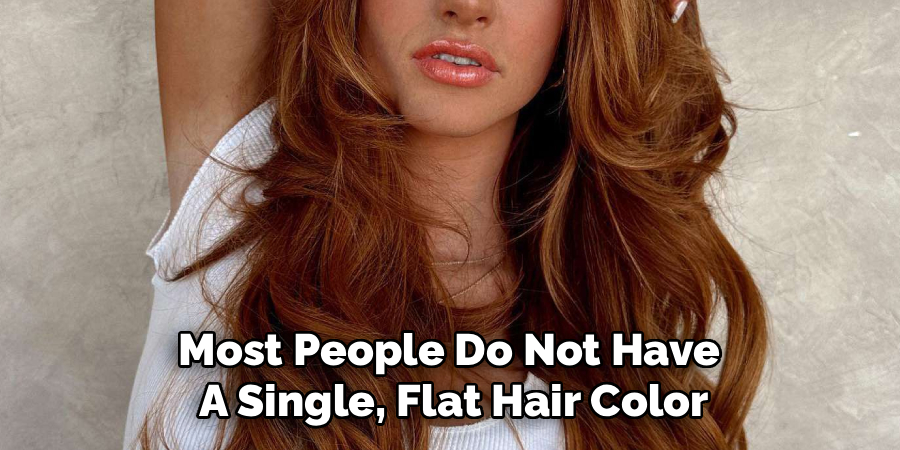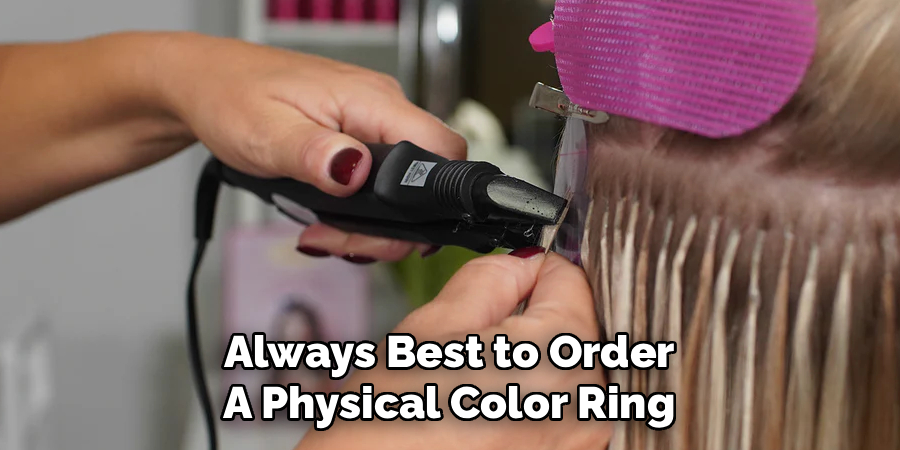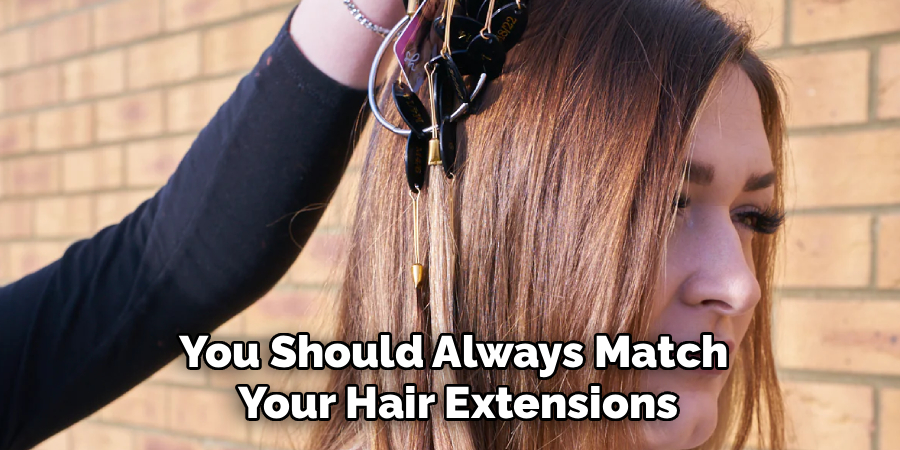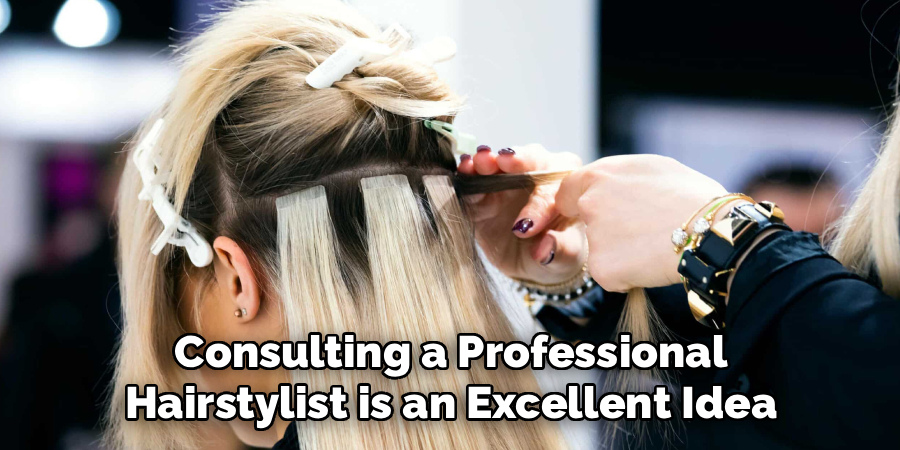Hair extensions are a fantastic way to instantly add volume, length, or even a pop of color to your hair. They can completely transform your look, boosting your confidence for a special event or just for everyday life. However, the secret to making extensions look like they’ve grown right from your own scalp is a perfect, seamless blend. When extensions are poorly matched, they can look obvious and unnatural. The difference between a hair dream and a hair disaster all comes down to the match. This guide will provide clear, beginner-friendly instructions and demystify the process of how to match hair extensions for a flawless, undetectable finish.

Matching hair extensions involves more than just picking a color that looks close to your own. It requires understanding tone, texture, and length to create a truly harmonious and natural look. The process may seem intimidating at first, but with the right approach and a bit of practice, anyone can achieve a perfect match. By following simple steps and considering key factors, you’ll ensure your extensions blend effortlessly and enhance your overall style. Here are some tips to help you find the perfect match for your hair.
Understanding Tone
The first step in finding a perfect match for your hair extensions is understanding tone. Hair color can be broken down into three main categories: warm, cool, and neutral. Warm tones have red, gold, or orange undertones, while cool tones have blue, violet, or green undertones. Neutral tones have a balance of both warm and cool tones.
To determine your hair’s tone, take a look at your natural hair color in natural light. If it appears more golden or reddish, you likely have warm-toned hair. If it looks more ashy or bluish, you probably have cool-toned hair. If you have a mix of both warm and cool tones, you likely have neutral-toned hair. Understanding your hair’s tone is important when choosing the right hair color and highlights.
In addition to understanding your natural hair color, it’s also important to consider skin tone. Just like with hair, skin tones can be classified as warm, cool, or neutral. Warm-toned skin has a peachy or golden undertone, cool-toned skin has a pink or blue undertone, and neutral-toned skin has a mix of both warm and cool undertones.

Step-by-Step Guide on How to Match Hair Extensions
Step 1: Analyze Your Hair in Natural Daylight
Before you even look at a color swatch, take your hair outside. The fluorescent lighting in stores and bathrooms can drastically alter how your hair color appears. Natural daylight is the only way to see the true, complex range of tones in your hair. Stand near a window or step outside and examine your hair from root to tip. You’ll likely notice it’s not just one solid color but a blend of different shades. This observation is the crucial first step in finding an extension color that will blend seamlessly with your natural dimension.
Step 2: Focus on the Ends
When selecting a color, a common mistake is trying to match the extensions to your root color. Your roots are often darker and are hidden under the top layers of your hair anyway. The extensions will be blended throughout the mid-lengths and ends, so that is the color you need to match. Hold a color swatch against the last few inches of your hair. This is the area where your natural hair and the extensions will meet, and a perfect match here is what creates a truly believable and natural-looking result.
Step 3: When in Doubt, Choose Multiple Shades
Most people do not have a single, flat hair color. Your hair has natural highlights and lowlights that give it dimension and depth. If you find yourself stuck between two or three similar shades, consider getting a mix of them. Many brands offer dimensional or highlighted extension packs for this very reason. Blending two or more complementary shades of extensions together is a professional trick that creates an incredibly natural, multi-tonal look that will mimic the real dimension in your own hair, ensuring a perfect integration that avoids a blocky, artificial appearance.

Step 4: Consider the Texture
Color is only half the battle; texture is just as important for a seamless blend. Observe your natural hair’s texture. Is it silky straight, slightly wavy, curly, or coily? Choose extensions that mimic this texture as closely as possible. Putting stick-straight extensions in naturally wavy hair will create a noticeable disconnect. While you can style human hair extensions to match your texture, starting with a product that is already a close match will save you significant styling time and provide a much more natural look right from the start.
Step 5: Determine the Right Length
The length you choose depends on your desired final look and your natural hair’s current length. If you are primarily looking to add volume, select extensions that are the same length as your own hair or just slightly longer. If your goal is to add significant length, a good rule is to choose extensions that are no more than four to six inches longer than your natural hair. This helps ensure a smoother, more gradual blend. A dramatic difference in length can make it difficult to layer and blend the hair for a natural transition.
Step 6: Decide on the Extension Type
There are many types of hair extensions, and the right one depends on your lifestyle, budget, and commitment level. Clip-ins are perfect for temporary wear and are great for beginners. Tape-ins and halo extensions offer a semi-permanent option that is still relatively easy to manage. More permanent methods like sew-ins or fusion bonds require professional installation. Consider how often you want to wear your extensions and how much maintenance you are willing to do when selecting the type that will work best for you and your hair.
Step 7: Order a Color Swatch or Test Weft
Looking at colors on a computer screen can be incredibly deceiving. Screen settings and lighting can make colors appear very different from how they look in real life. To avoid a costly mistake, it’s always best to order a physical color ring or a small test weft from the brand you are considering. This allows you to hold the actual hair sample up to your own hair in natural light. It is the most reliable and foolproof way to ensure you are selecting the absolute perfect shade before committing to a full set.

Diy Matching Advice
If you’re unable to access a physical color ring or test weft, there are still some DIY methods you can use to match your hair color at home. Start by taking a photo of your hair in natural light—avoid direct sunlight or shadows as they can distort the color. Use this photo to compare your hair to online hair color charts provided by the brand. Additionally, consider enlisting a friend or family member to help you assess your hair color, as a second pair of eyes can spot subtle tones that you might miss. Remember to account for undertones in your hair, such as cool, warm, or neutral hues, as they play a big part in finding a seamless match. Ultimately, patience and careful observation are key to achieving the best results.
Tips for Choosing the Right Hair Color
Choosing the right hair color can be a daunting task, especially with so many options available in the market. With different shades, brands, and formulas to choose from, it’s no wonder that many people struggle with finding their perfect match. Here are some tips to help you choose the right hair color for your desired look.
The first step in choosing the right hair color is understanding your natural hair color. This will give you a starting point to work from when selecting a new shade. Look at your roots and see if they are lighter or darker than the rest of your hair.
Frequently Asked Questions (FAQ)
Should I Match My Extensions to My Roots or Ends?
You should always match your hair extensions to the mid-lengths and ends of your hair, not the roots. Your roots are typically darker and will be covered by the top layer of your hair. The extensions need to blend with the hair they will be sitting next to, which is the bottom half of your hair. This creates the most natural and seamless transition.

What If My Hair Is Between Two Colors?
If your hair color falls between two shades, it’s almost always better to choose the slightly lighter option. Lighter pieces will blend in like natural highlights and add dimension. A shade that is too dark can look stark and unnatural. Alternatively, the best professional trick is to buy a mix of the two closest shades and blend them together for a perfect, multi-tonal match.
How Do I Match Extensions to Highlighted Hair?
For highlighted hair, you have two great options:
- Choose a base color that matches the most dominant lowlight in your hair. The highlights will then naturally layer on top.
- Select a “dimensional” or “highlighted” extension pack that is specifically designed with multiple tones blended into each weft. This is often the easiest way to get a perfect match for multi-tonal hair.
Should I Get Human Hair or Synthetic Extensions?
This depends on your goals and budget. Human hair is more expensive but offers the most natural look and feel. It can be heat-styled, washed, and dyed just like your own hair. Synthetic hair is more affordable but often has an unnatural shine and cannot be heat-styled. For the most realistic blend, 100% Remy human hair is always the recommended choice.
Can a Hairstylist Help Me Match My Extensions?
Absolutely! If you are feeling unsure, consulting a professional hairstylist is an excellent idea. They are experts in color theory and can help you find a perfect match for your hair’s unique color and texture. They can also help you install the extensions and cut or layer them to blend perfectly with your natural hair, providing a truly professional finish.

Conclusion
The art of achieving a flawless, “is-it-or-isn’t-it” look with hair extensions lies entirely in the match. By taking the time to analyze your hair’s true color in natural light, focusing on the ends, and considering both texture and length, you can avoid the common pitfalls of an obvious extension job. Whether you choose a single shade or blend multiple tones, a perfect match is what makes the magic happen. Now that you have a clear understanding of how to match hair extensions, you are ready to confidently select the perfect set to enhance your natural beauty and achieve the hair of your dreams.
About the Author
Jane Hubbard is a passionate beauty expert with a wealth of experience in makeup, hair, and overall beauty techniques. After years of working as a hairdresser specialist, she followed her entrepreneurial spirit and started her own consultancy business.
Jane has always been driven by her desire to help others feel confident in their own skin, and she does this by sharing her knowledge, experiences, and practical beauty tips. Through her consultancy, she empowers individuals to embrace their unique beauty, offering tailored guidance that boosts both self-esteem and personal style.
Professional Focus
- Specializes in makeup, hairstyling, and beauty consulting.
- Provides personalized beauty advice, tips, and techniques to help individuals feel confident in their appearance.
- Dedicated to staying up-to-date with the latest industry trends and developments.
- Passionate about creating a comfortable and empowering experience for every client.
Education History
- University of Craft and Design – Bachelor of Fine Arts (BFA) in Woodworking and Furniture Design
- Woodworking Apprenticeships – Extensive hands-on training with skilled craftsmen to refine carpentry and furniture making techniques
- Online Courses & Masterclasses – Continued education in advanced woodworking techniques, design principles, and specialized tools
Expertise:
- Makeup artistry, hairstyling, and beauty consulting.
- Personalized beauty techniques to enhance confidence and self-expression.
- Educating clients on how to maintain their beauty routines at home.
